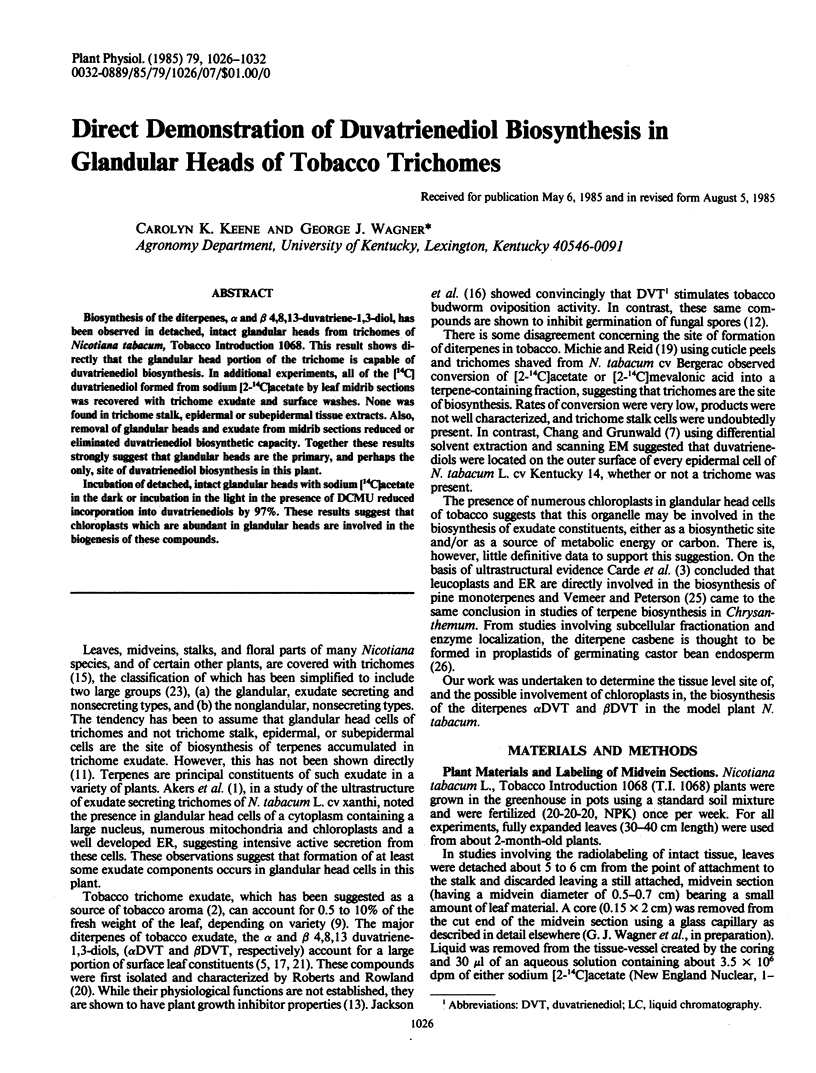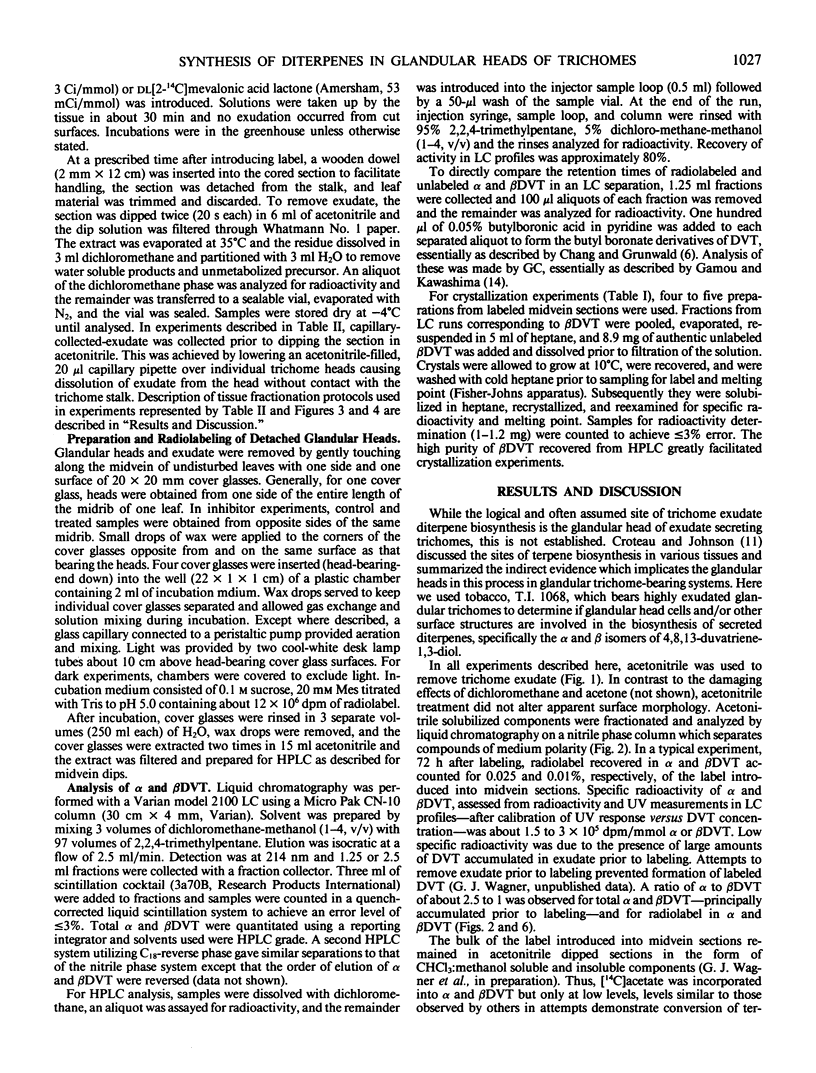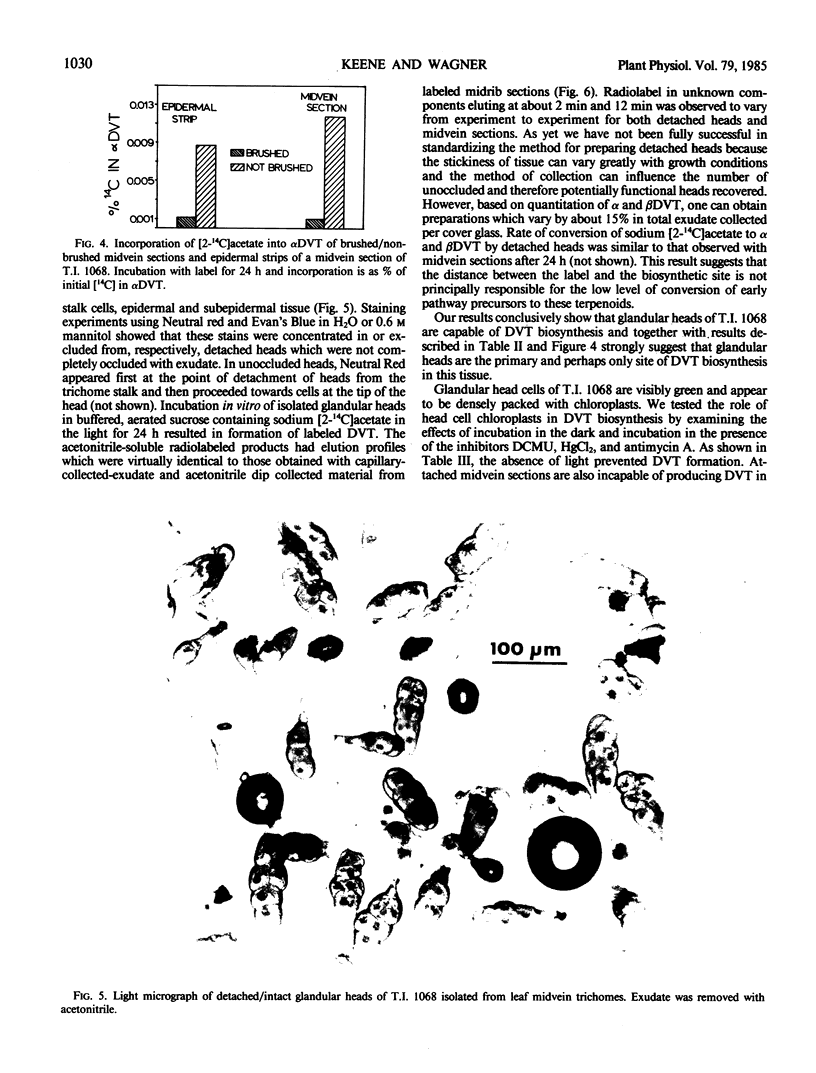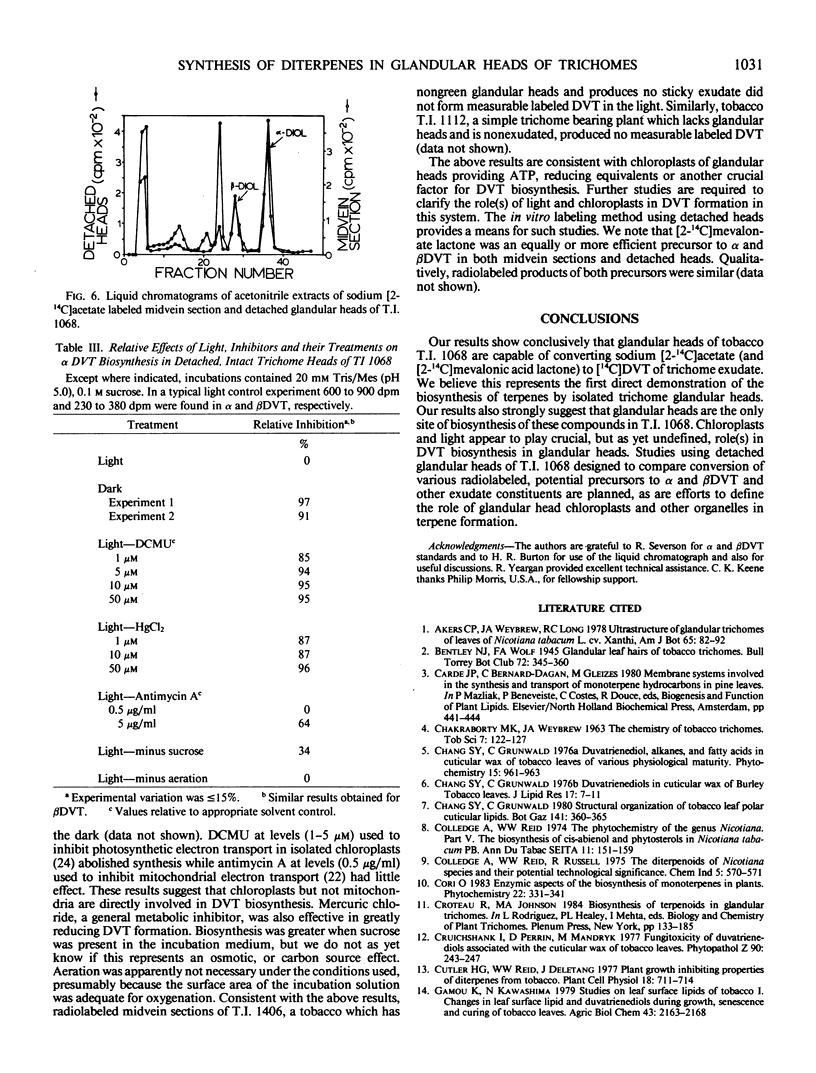Abstract
Biosynthesis of the diterpenes, α and β 4,8,13-duvatriene-1,3-diol, has been observed in detached, intact glandular heads from trichomes of Nicotiana tabacum, Tobacco Introduction 1068. This result shows directly that the glandular head portion of the trichome is capable of duvatrienediol biosynthesis. In additional experiments, all of the [14C] duvatrienediol formed from sodium [2-14C]acetate by leaf midrib sections was recovered with trichome exudate and surface washes. None was found in trichome stalk, epidermal or subepidermal tissue extracts. Also, removal of glandular heads and exudate from midrib sections reduced or eliminated duvatrienediol biosynthetic capacity. Together these results strongly suggest that glandular heads are the primary, and perhaps the only, site of duvatrienediol biosynthesis in this plant.
Incubation of detached, intact glandular heads with sodium [14C]acetate in the dark or incubation in the light in the presence of DCMU reduced incorporation into duvatrienediols by 97%. These results suggest that chloroplasts which are abundant in glandular heads are involved in the biogenesis of these compounds.
Full text
PDF






Images in this article
Selected References
These references are in PubMed. This may not be the complete list of references from this article.
- Chang S. Y., Grunwald C. Duvatrienediols in cuticular wax of Burley tobacco leaves. J Lipid Res. 1976 Jan;17(1):7–11. [PubMed] [Google Scholar]
- Slater E. C. The mechanism of action of the respiratory inhibitor, antimycin. Biochim Biophys Acta. 1973 Dec 7;301(2):129–154. doi: 10.1016/0304-4173(73)90002-5. [DOI] [PubMed] [Google Scholar]
- Uriel J., Berges J. Characterization of natural inhibitors of trypsin and chymotrypsin by electrophoresis in acrylamide-agarose gels. Nature. 1968 May 11;218(5141):578–580. doi: 10.1038/218578b0. [DOI] [PubMed] [Google Scholar]
- Voors A. W., Shuman M. S., Johnson W. D. Additive statistical effects of cadmium and lead on heart-related disease in a North Carolina autopsy series. Arch Environ Health. 1982 Mar-Apr;37(2):98–102. doi: 10.1080/00039896.1982.10667544. [DOI] [PubMed] [Google Scholar]





